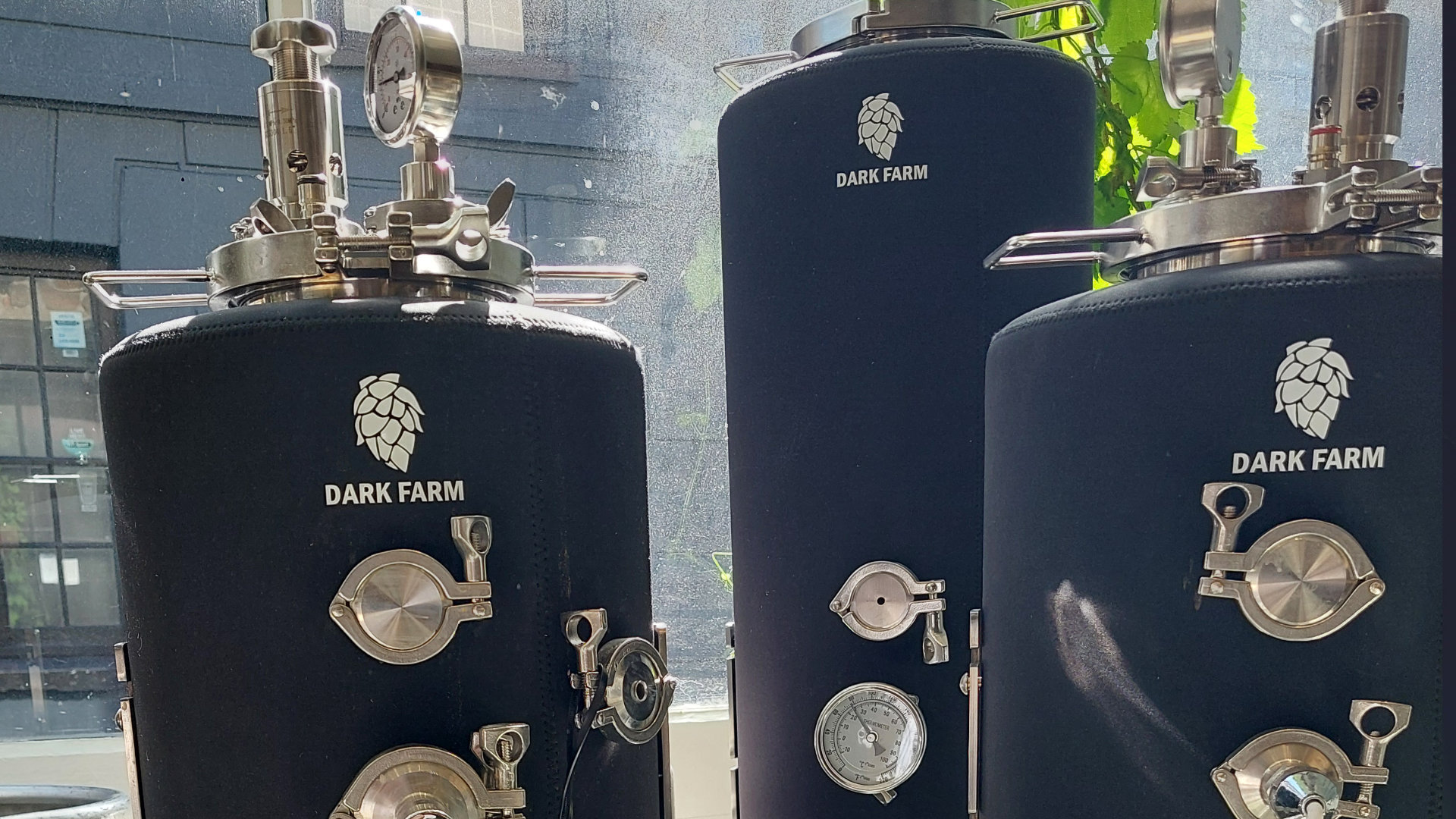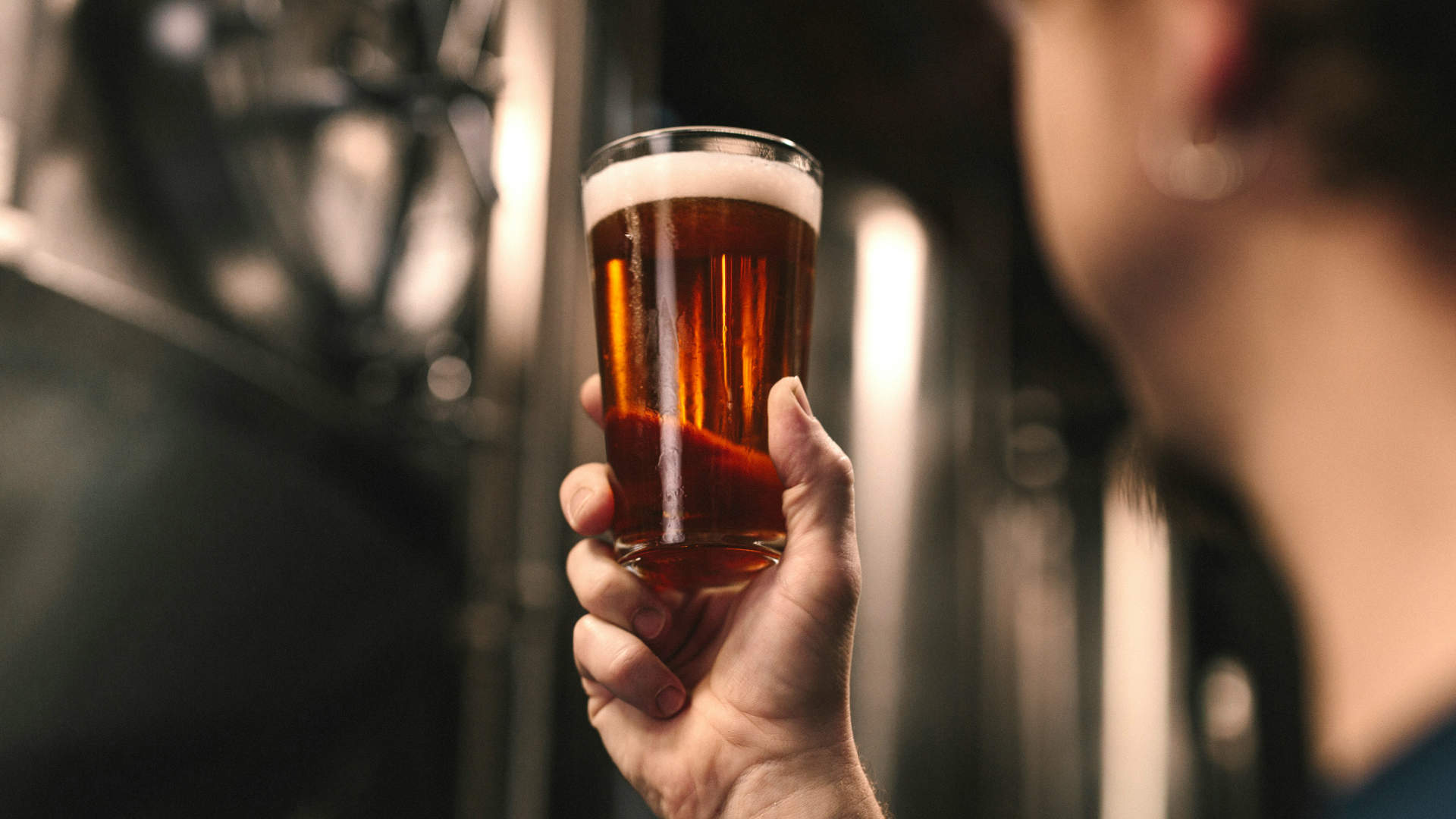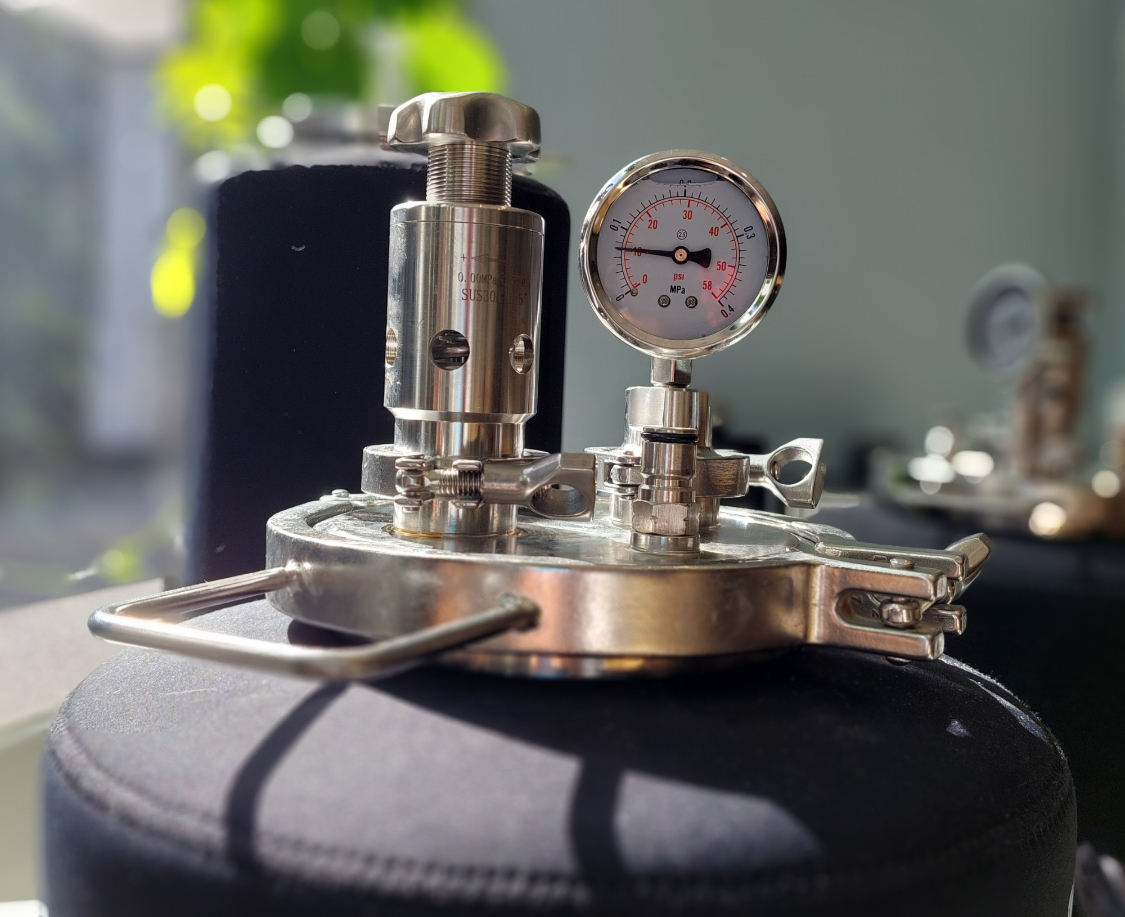In my conservatory condensation is a serious problem in the cooler months. I used to have an extractor fan hooked up to my first boil kettle, however when I upgraded to the Brew Tank this was not an option. Having read about a steam condenser I was sceptical of the claims made, but as I had some of the components I resolved to try to make one up. Now, however, Dark Farm can save you the trouble and supply one ready to go.
In the picture you will see I have connected it up to a long cranked pipe that I welded up, which is high enough to discharge into the sink. I now find this unnecessary and just drain to a bucket as it only produces about 4 or 5 gallons for a one hour boil.
The mains water is fed into a nozzle that emits a cone shaped, very fine spray just below the port that is connected to the Brew Tank. This condenses the steam instantly and produces a lower pressure and thus air flows into the open port in the lid. It is, in effect, an air pump, and the effect can be seen by looking into the open port. There you will observe a swirl of steam around an inverted cone with no steam coming out. The open port needs to be the same size as the port the condenser is connected to in order to work best. I also found it important that the hose can drain freely and is not in the water in the bucket or has water trapped in it.
The next big advantage in these days of expensive electricity is that you can reduce the input power considerably. My setup can maintain a temperature of 99.4C on 850W to 900W, which, for me, is less than half of what I would need to input with a tank with the lid off.
Additionally, the boil off loss will be reduced, and this became apparent to me as I found my O.G. was lower than expected and my fermenting volume higher.
As you see, I connect to the lid, but you can connect to the upper horizontal port on the tank. In my case, however, I am boiling nearly 50 litres so felt there was a high risk of boil over.
TOP TIPS
I keep the 1.5 inch port open (as in the photo) to allow the tank a supply of fresh air - the condenser is an air pump of course. A thermometer lowered into the port gets about 75mm into the tank before the temp increases rapidly.
I was told that the most important thing is to keep the pipe clear and not in the water in the bucket or it stops working.
All in all I think it a winner on all counts!




